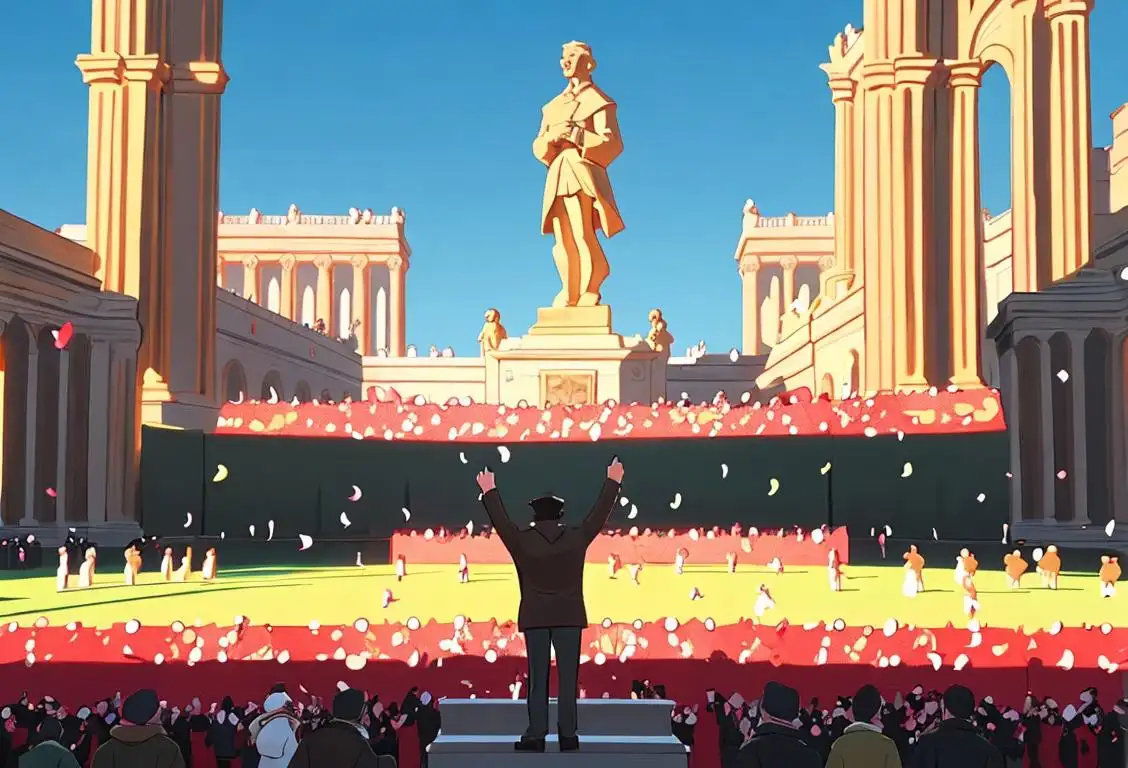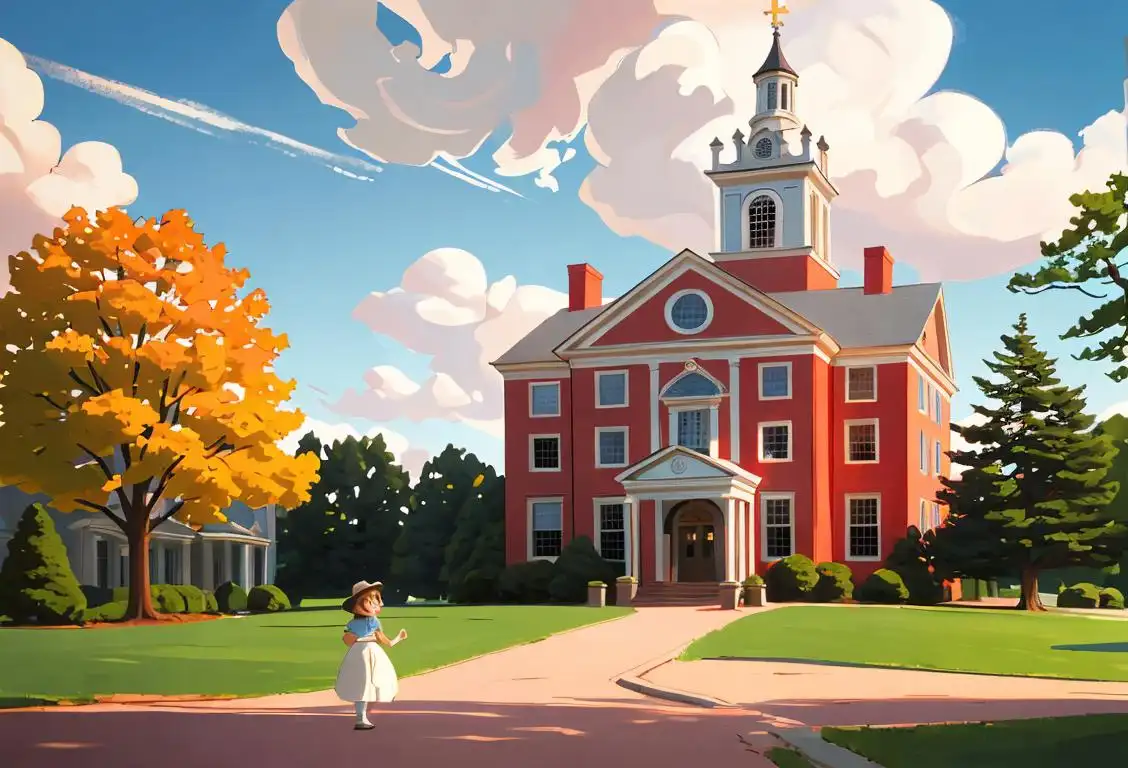National Monument Day

Welcome to the magical world of National Monument Day! This extraordinary day is all about celebrating those iconic structures that make our jaws drop and our hearts skip a beat. Whether it's the Statue of Liberty, the Eiffel Tower, or your neighbor's strange lawn gnome collection, these monuments hold a special place in our hearts. So get ready to embark on a journey through history, grandeur, and the joy of pretending to be a superhero atop a plinth.
When is Monument Day?
It's national monument day on the 16th June.
A Brief History of National Monument Day
Ever wondered how National Monument Day came to be? Well, grab your virtual hard hat and join us on a journey through internet history!
It all started back in June 2016, when the online world exploded with 42 mentions of National Monument Day. People were sharing their love for these awe-inspiring structures and reminiscing about their memorable visits.
The origins of this special day can be traced back to the human need to commemorate important historical events and individuals. Monuments serve as tangible symbols of our past, reminding us of what came before and inspiring us to strive for a better future.
How to Celebrate National Monument Day
Now that you're all hyped up about National Monument Day, you're probably wondering how to properly celebrate it. Fear not, we've got you covered with some epic ways to honor these remarkable structures:
- Go on a Monument Crawl: Gather your friends and family for a tour of local monuments. Take quirky photos, learn interesting facts, and have a blast exploring the history of your surroundings.
- Create Your Own Mini-Monument: Unleash your creativity and build a miniature monument using everyday objects. It could be made of toothpicks, Legos, or even mashed potatoes (just make sure to eat them after your masterpiece is complete).
- Host a Monument-themed Movie Night: Grab some popcorn and gather your loved ones for a movie marathon featuring films set against the backdrop of iconic monuments. It's like traveling the world from the comfort of your living room!
Did You Know?
Did you know that the oldest known monument is the Göbekli Tepe in Turkey? It dates back to around 9600 BCE and predates the invention of writing by several millennia. Talk about an ancient selfie spot!
History behind the term 'Monument'
3000 BC
Ancient Origins
The history of the term 'monument' dates back to ancient times. The concept of erecting monumental structures began around 3000 BC when ancient civilizations started building large-scale structures to commemorate significant events or individuals. Examples include the pyramids of Egypt and Stonehenge in England. These early monuments were often religious or ceremonial in nature and symbolized the power and achievements of the respective civilizations.
5th Century BC
Greek Influence
During the 5th century BC, the Greeks made significant contributions to the development of monumental architecture. The word 'monument' has its roots in the Latin 'monumentum,' which itself was derived from the Greek term 'monas,' meaning 'single' or 'one.' Greek monuments, such as the Parthenon in Athens, became iconic symbols of Greek culture, art, and history. These structures represented the ideals and achievements of the ancient Greek civilization.
14th Century
Medieval Memorials
In the 14th century, the meaning of 'monument' started to encompass not only grand architectural structures but also smaller commemorative memorials. During the medieval period, tombs, effigies, and gravestones became popular forms of monuments. These memorials were often erected to honor the deceased and preserve their memory within religious buildings or cemeteries. The term 'monument' expanded to include not only physical structures but also objects with symbolic or sentimental value.
18th Century
Monuments of the Enlightenment
In the 18th century, the era of Enlightenment brought about a renewed interest in classical antiquity and the preservation of historical artifacts. Monuments became symbols of cultural heritage and national identity. This period witnessed the rise of public memorials dedicated to famous figures, military heroes, and significant historical events. The growth of urban centers led to the establishment of public parks adorned with statues and monuments, serving as focal points for civic pride and remembrance.
20th Century
Monuments as Commemoration
The 20th century saw the evolution of monuments as powerful tools for commemorating collective memories and promoting social causes. Monuments became sites of remembrance for victims of wars, genocides, and other historical atrocities. They also became platforms for expressing political opinions and advocating for social change. Notable examples include the Vietnam Veterans Memorial in the United States and the Apartheid Museum in South Africa. These monuments serve as reminders of past traumas and catalysts for societal reflection and progress.
Did you know?
Did you know that the oldest known monument is the Göbekli Tepe in Turkey? It dates back to around 9600 BCE and predates the invention of writing by several millennia. Talk about an ancient selfie spot!Tagged
romance nsfw fun rememberanceFirst identified
16th June 2016Most mentioned on
16th June 2016Total mentions
42Other days
Personal Safety Day
Disaster Awareness Day
Children Day
Whine Day
Massachusetts Massachusetts Day
Terrence Andrew Davis Day
Happiness Day
One Day
Opposite Day
News Within A Day









